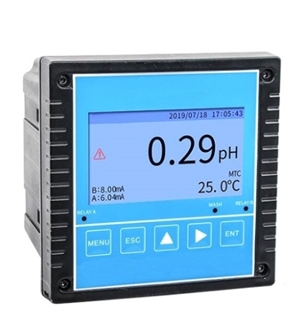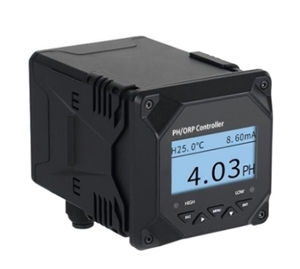Before using any pH meter, it must be calibrated with pH standard solutions to measure the pH of samples. Due to the wide variety of pH meters from different brands and manufacturers, their calibration steps and methods may vary slightly, but they are generally similar. Without targeting a specific product, let's discuss the calibration methods and steps for pH meters overall. For general applications where high accuracy is not required, a single-point calibration method can be used. Industrial online pH meters typically employ a two-point calibration method. For laboratory-grade instruments, a three-point calibration method can be used.

One-Point Calibration of pH Meter
For samples requiring measurement accuracy below 0.1 pH, a single-point calibration method can be employed, typically using pH 6.86 or pH 7.00 standard buffer solution. Some instruments with precision levels of only 0.2 pH or 0.1 pH may have only one "position" adjustment knob. The specific operational steps are as follows:
- Measure the temperature of the standard buffer solution and adjust the temperature compensation knob to the corresponding temperature, based on the pH value at that temperature.
- Rinse the electrode with distilled water and shake off excess water.
- Immerse the electrode in the buffer solution, shake it, and let it stabilize. Adjust the positioning knob until the instrument displays the pH value of the standard solution.
- Remove the electrode, rinse, and shake dry.
- Measure the sample temperature and adjust the pH meter temperature compensation knob to the corresponding temperature.
Two-Point Calibration of pH Meter
For precision-grade pH meters equipped with "position" and "temperature compensation" adjustments, as well as an electrode "slope" adjustment, a two-point calibration is necessary. Typically, calibration is first performed using pH 6.86 or pH 7.00 for "position," followed by pH 4.00 (acidic) or pH 9.18 and pH 10.01 (alkaline) buffer solutions for "slope" correction. The specific operational steps are as follows:
- Clean and shake dry the electrode, immerse it in pH 6.86 or pH 7.00 standard solution, and set the instrument's temperature compensation knob to the solution temperature. Once the reading stabilizes, adjust the positioning knob to match the pH of the standard solution.
- Remove the electrode, clean, and shake dry. Immerse it in the second standard solution. Once the reading stabilizes, adjust the instrument's slope knob to match the pH of the second standard solution.
- Remove the electrode, clean, and shake dry. Immerse it again in pH 6.86 or pH 7.00 buffer solution. If the error exceeds 0.02 pH, repeat steps (1) and (2) until correct pH values are displayed without adjustment in both standard solutions.
- Remove the electrode, shake dry, adjust the pH temperature compensation knob to the sample solution temperature, and immerse the electrode in the sample solution. After shaking and stabilizing, read the pH value.

Three-Point Calibration Method for pH Meter
Regardless of the type of pH meter, calibration at pH 7 is essential, and it should be calibrated first when performing a two-point calibration. During calibration, start from pH 7.0, and select standard solutions based on the pH value of the solution to be measured, ensuring that the solution's pH falls within the calibration range. Generally, a two-point calibration suffices for most requirements. However, for high precision applications such as laboratory use, a three-point calibration is considered.
Some instruments offer the capability to calibrate at three points, with selectable modes available. For those that do not, a two-point calibration method is commonly employed, requiring calibration at two separate points. When performing a calibration with standard solutions at pH 7.00 and pH 4.01, if a third point is needed, the choice between using buffer solutions such as pH 9.21, 10.01, 9.18, 12.46, 1.68, or others depends on the specific sample conditions. The decision for the third point in pH calibration largely depends on the characteristics of the sample.
There are various calibration solutions available ranging from pH 1.68 to 12.46, and the selection depends on the pH range of the sample. Commonly used solutions include pH 4.00, 6.86, and 9.18. If the sample tends more towards alkalinity, solutions such as pH 9.18, 10.01, and 12.46 may be required. The calibration sequence varies depending on the instrument; some require calibration in a specific order, while others automatically recognize the sequence. Refer to the relevant instrument manual for guidance. A commonly used sequence is to calibrate at pH 7, pH 4, and then pH 10. Calibration is typically performed by first calibrating in acidic conditions followed by alkaline conditions.
For more meter knowledge, head over to sisco.com.

